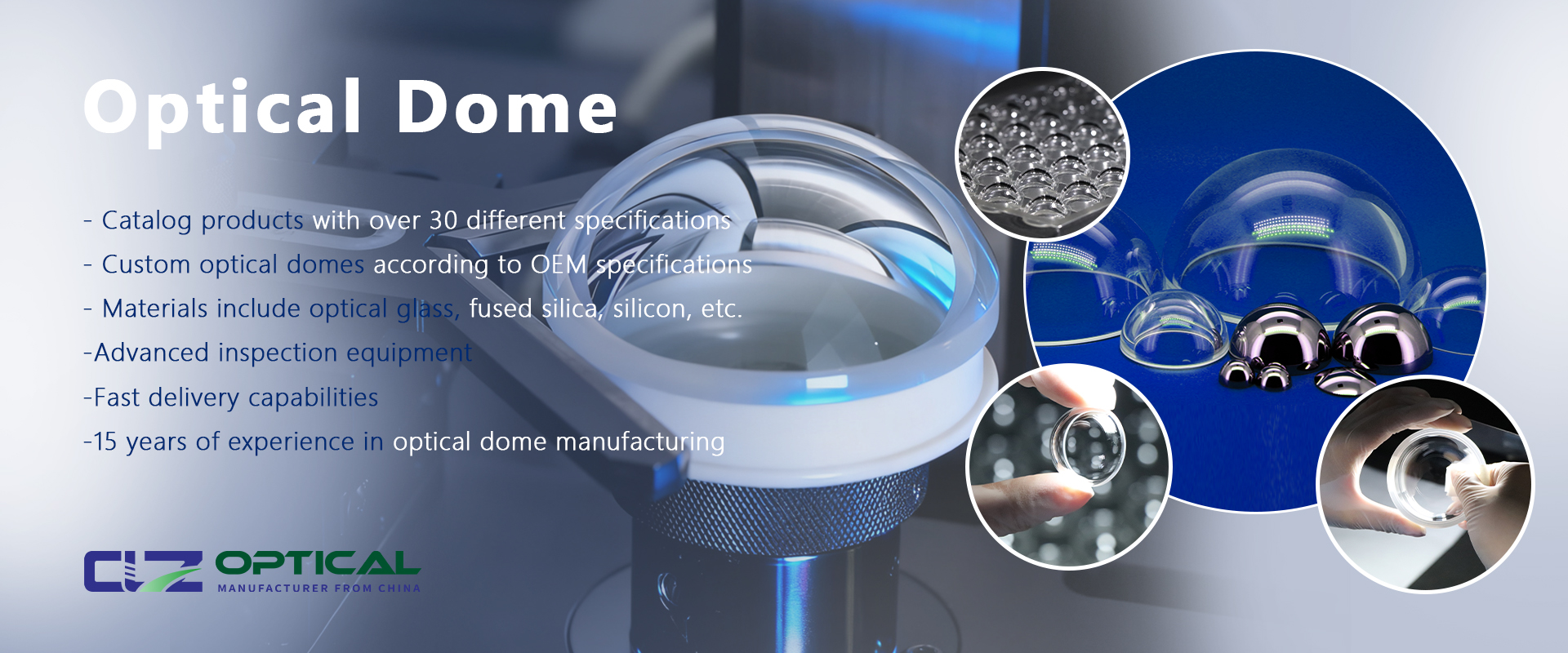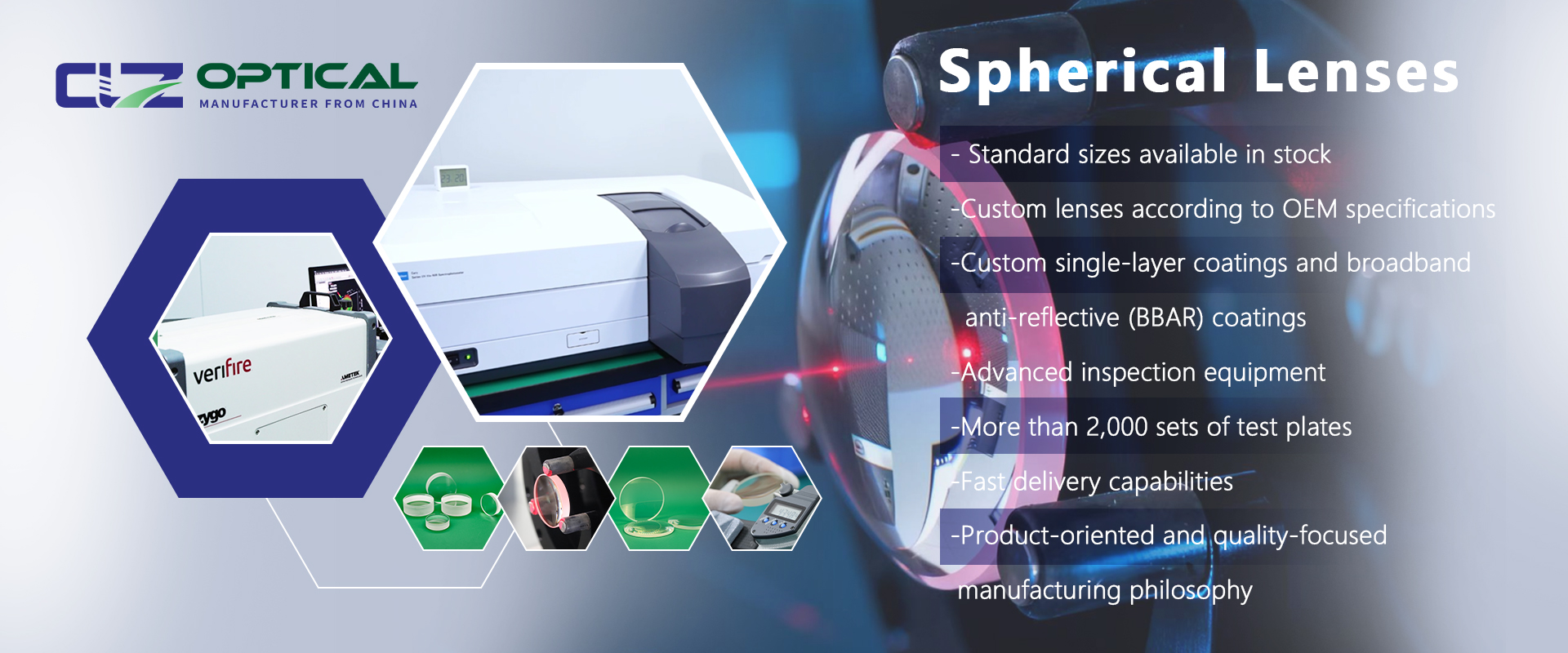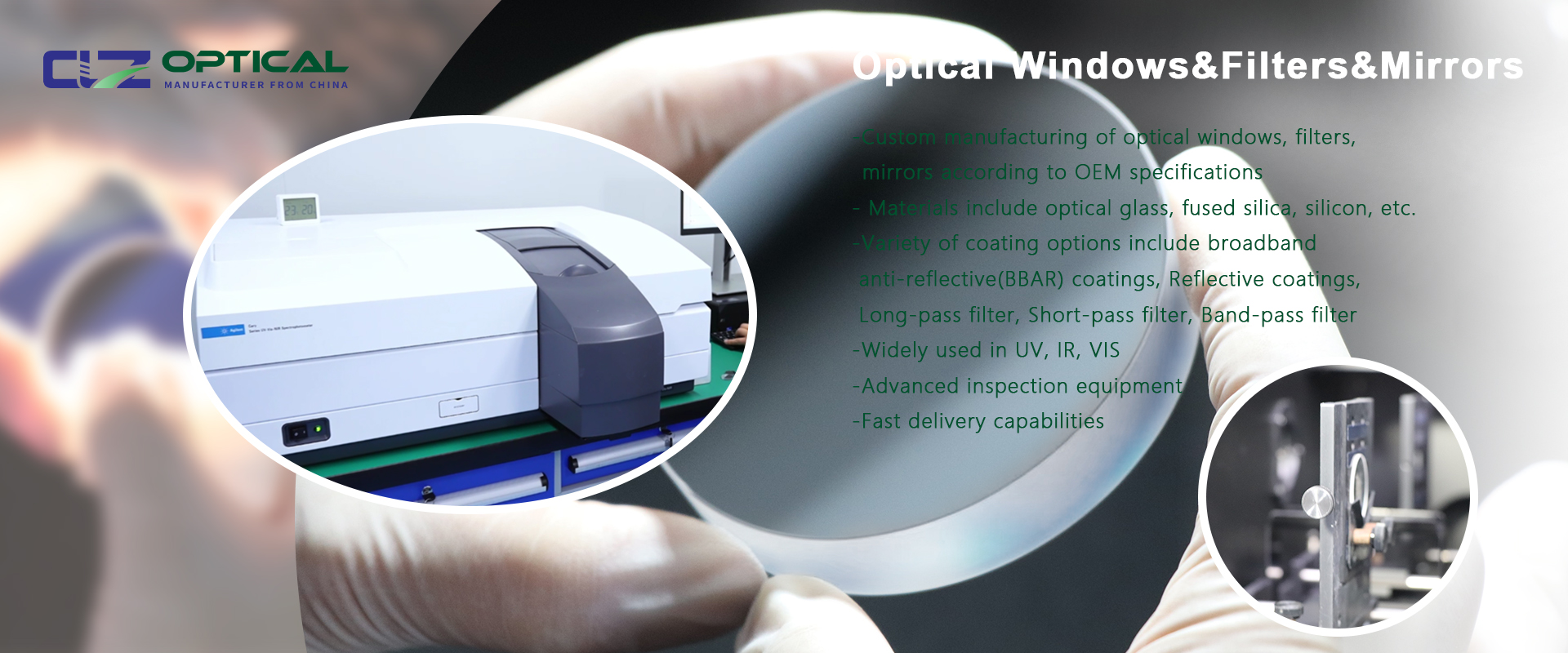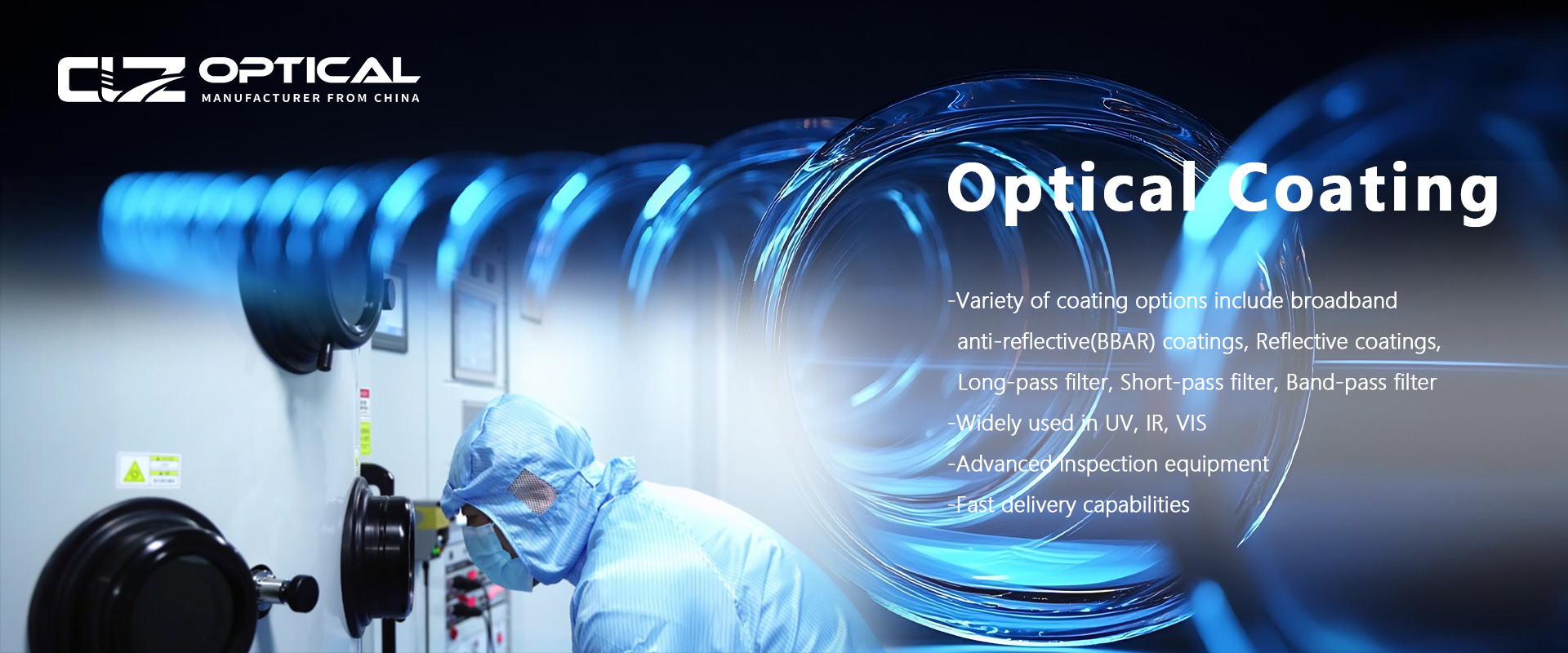Difference between dielectric film mirrors and metal coating mirrors
Oct. 22, 2024
Optical mirrors is an optical element that works by using the law of reflection of light. It can reflect light from one direction to another, that is, when the light is incident on the mirror, the angle of incidence is equal to the angle of reflection. By controlling the angle of incidence and the angle of reflection, it is possible to guide the light to the desired position.
The classification and composition of optical mirrors are mainly based on their surface type, shape, degree of reflection, coating materials, and other aspects. From the surface type, they can be divided into plane mirrors, spherical mirrors, aspherical mirror, and according to the shape, they can be divided into plane mirrors, right-angle prism mirrors, off-axis parabolic mirrors, etc. From the reflection degree, they can be divided into total reflection mirrors, semi-transparent semi-reflective mirrors (beam splitters); plane mirrors can be further divided into dielectric mirrors, ultrafast mirrors, super mirrors, and metal coating reflectors; metal coating mirrors can be further divided into aluminum coating mirrors, gold coating mirrors, and silver coating mirrors.
CLZ Optical Co., Ltd. is a manufacturer of optical components, main products including spherical lenses, optical domes, optical windows, Of course, this also includes the optical mirrors mentioned in this article. Our products are widely used for aerospace, underwater photography, medical field, laser field and so on. We have a variety of substrate materials for you to choose from, including optical glass H-K9L or N-BK7, Fused Silica, Sapphire, Silicon etc.
We also can provide OEM service, custom for customer according their requirements.
Classification of mirrors
1. Classification by surface accuracy
Plano optical mirror: Mirror with a flat reflective surface, which can be the front surface or the back surface. Plano mirrors are mainly used to change the propagation direction of light. They follow the law of reflection of light, that is, when light is incident on the mirror surface, the angle of incidence is equal to the angle of reflection. The main feature of a plane reflector is that it can reflect light at the same angle to form a mirror effect.
Spherical mirror: Mirrors with a spherical reflective surface are divided into convex and concave mirrors. Convex mirrors diverge parallel light rays, while concave mirrors converge parallel light rays to a point. Spherical mirrors are widely used in optical imaging, focusing, etc.
Aspheric mirror: The mirror whose reflective surface is neither flat nor spherical, such as parabolic mirrors, hyperbolic mirrors, and ellipsoidal mirrors. This reflector type has unique advantages in specific applications, such as focusing parallel light beams, collimating point light sources, etc.
2. Classification by morphology
Right-angle prism mirrors:
Usually, the right-angle edges are coated with anti-reflection coatings, and the bevel edges are coated with reflective coatings. The right-angle prism itself has a large contact area and typical angles such as 45° and 90°, so compared with ordinary reflectors, the right-angle prism is easier to install and has better stability and strength against mechanical stress. They are the best choice for optical components for various devices and instruments.
3. Classification of plano mirrors
Dielectric coating mirrors:
Multiple layers of dielectric coating are coated on the surface of optical elements to make interference superposition of a certain band, thereby enhancing the reflectivity. The dielectric coating has a high reflectivity and can be used in a wide wavelength spectrum. The coating does not absorb light, the coating is hard and not easily damaged, and is suitable for optical systems with multi-wavelength lasers. This type of mirror has a thicker coating layer, is angle-sensitive, and has a higher cost.
Metal coating mirrors:
Metal coating mirrors are very suitable for deflecting the light path of wide-spectrum light sources and have high reflectivity in a wide spectrum range. The metal coating is easily oxidized and discolored or falls off in a high-humidity environment, so metal coating mirrors are generally coated with a layer of silicon dioxide protective coating on their surface to isolate the metal coating from direct contact with the air and prevent the metal coating from being oxidized and affecting the optical performance.
The composition of the optical mirrors
Optical Mirror is mainly composed of two parts: substrate material and coating layer.
1. Substrate Material:
Common substrate materials include glass (such as optical glass H-K9L, fused silica), UV fused silica, etc. These materials have good optical properties and mechanical strength and can meet the needs of different application scenarios.
The selection of substrate materials needs to consider factors such as their thermal expansion coefficient, light transmittance, cost, and ease of polishing.
2. Coating Layer
The coating layer is a key part of the mirrors which determines the reflectivity, stability, and durability of the mirror. The coating layer materials can be divided into metal materials and dielectric materials. For example, silver, aluminum, gold, etc. have a wide reflection spectrum band and high reflectivity, but are easily damaged oxidized, and discolored; dielectric materials such as multilayer dielectric coating have high reflectivity and low absorption, which are suitable for lasers and imaging fields with specific wavelengths.
The deposition processes of the coating layer include electron beam evaporation, ion-assisted deposition, ion beam sputtering, etc. These processes can ensure good bonding and uniformity between the coating layer and the substrate material.
The difference between dielectric coating mirrors and metal coating mirrors
The main differences between dielectric coating mirrors and metal coating mirrors are their construction, performance and application scenarios. Dielectric coating mirrors enhance reflectivity by coating multiple layers of dielectric coating on the substrate, while metal coating mirrors coat a single layer of metal coating on the substrate. Dielectric coating mirrors have high reflectivity and low absorption in a specific wavelength range and are suitable for precision optical systems, while metal coating mirrors have high reflectivity in a wide wavelength range and are suitable for industrial and scientific research fields.
Dielectric coating mirrors are made by coating multiple layers of dielectric coating on a substrate, using the principle of multi-beam interference to enhance reflectivity. This type of mirror does not absorb light, the coating layer is hard and not easily damaged, and is suitable for optical systems with multi-wavelength lasers. However, dielectric coating mirrors are angle-sensitive and costly, and are suitable for use in a wide wavelength spectrum.
Metal coating mirror enhance reflectivity by coating a metal coating (such as aluminum, silver, or gold) on a substrate. This type of mirror has high reflectivity over a wide wavelength range and is suitable for industrial and scientific research. However, metal coatings are prone to oxidation, discoloration, or detachment in high humidity environments, so a protective coating is usually coated on the surface to isolate the air and avoid affecting the optical performance.




















